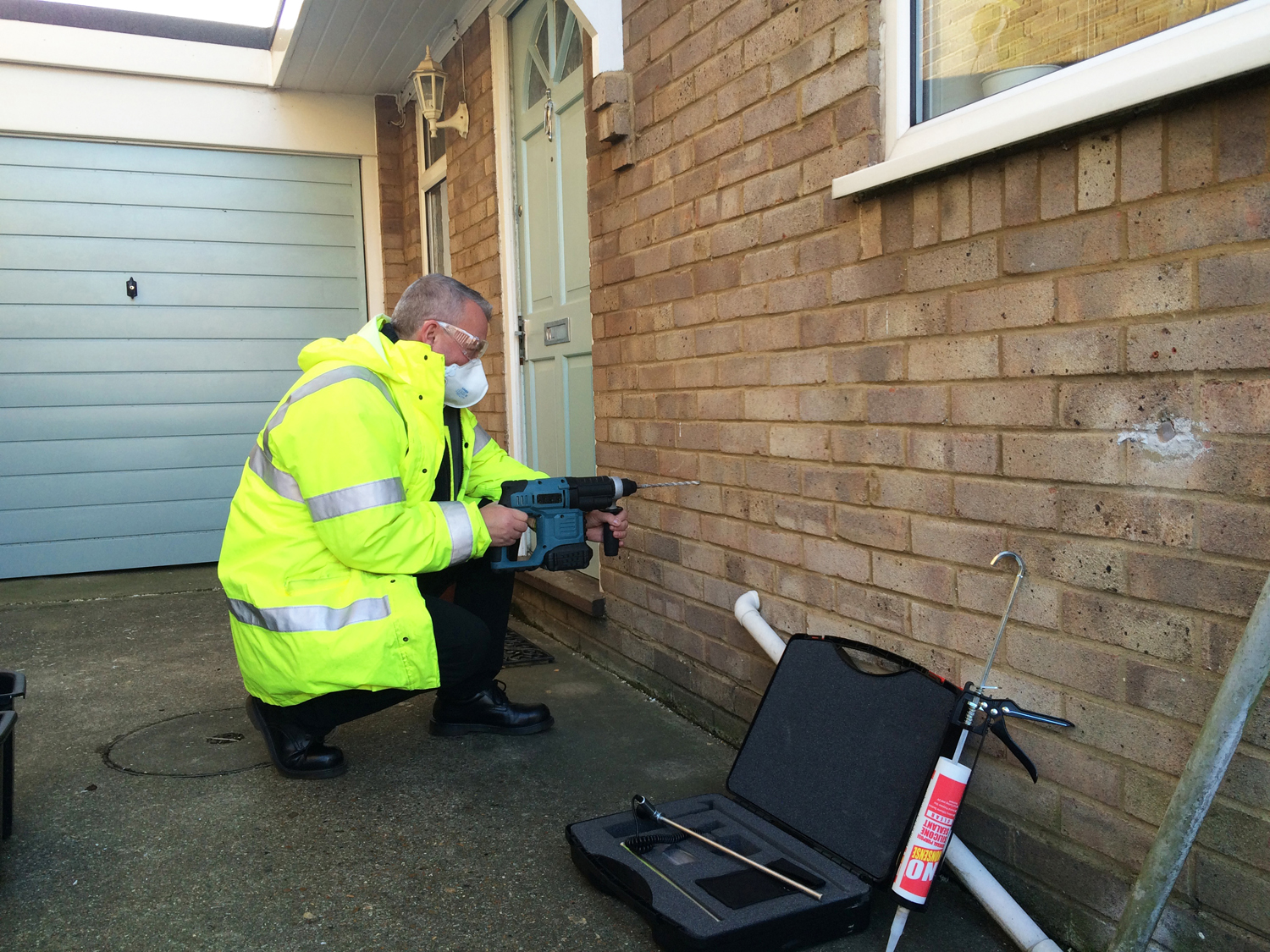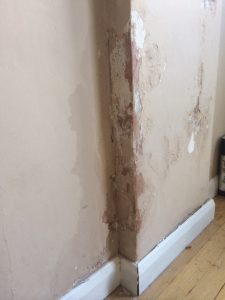
Rob McCormack, Director at BBA CIT, discusses the material considerations to protect the fabric of housing stock.
Getting it right first time is, undoubtedly, the aim of any social housing repair and maintenance programme, but infrequently that aim can be lost to budget and time constraints, local and central government policies or simply the process knocking a project from its intended course.
In the case of cavity wall insulation (CWI), a combination of factors have led to a growing number of social housing tenants facing mounting issues with incorrectly specified or installed insulation. So serious is the problem that Welsh MP Hywel Williams has described it as a ‘scandal’, claiming that many homes which had CWI installed are now suffering from damp, mould and condensation.
Hywel Williams’ Arfon constituency is in a highly weather-exposed location, designated as an Exposure Zone 4, receiving approximately 100l/m2 per spell of wind-driven rain. This high level of exposure to the elements may not rule out the suitability of CWI for properties but it does mean that additional measures may be necessary to ensure a successful installation.
This is also the case for homes in Zone 3. Zones 3 and 4 account for virtually the UK’s entire westerly coastline, much of Scotland, Wales and all of the South-west of England. Hywel is not alone in his concerns, other estimates have cited between 1.5m and 3m homes — private and social housing — as suffering from CWI issues.

Growing problem
In worst-case scenarios, BBA CIT has heard of installation companies being called in to survey CWI, removing the insulation and refilling on the same day. If the CWI failure was anything other than a poorly filled cavity, it is highly likely the initial problem will return simply because the root cause of the failure has not been addressed.
It also goes without saying that if the person making an assessment for insulation suitability is also responsible for commissioning the retrofit, the assessment will struggle to be impartial and problems may persist. With extraction costing upwards of £2,000 per property, plus the re-fill costs, budget-holders need to be assured that the correction remedial action is taken; good practitioners (and clients) should discuss cavity cleaning rather than extraction, since the procedure must include removal of rubble or debris in the cavity, which may facilitate the return of damp and condensation if left in-situ. It is also imperative to allow the property to dry out and assess its suitability for refilling.
CWI failures generally fall into two categories (although this is not definitive):
- A poorly filled cavity — heat can continue escaping through sections of unfilled cavity.
- The formation of damp and/or condensation-related mould — if a property is exposed to severe levels of wind-driven rain, located in an unsheltered position or has poorly constructed or maintained external walls the CWI can act as a ‘bridge’, transferring moisture from outer to internal walls.
We use the word ‘failure’ but in many instances it’s the specification that was at fault, with the CWI installed in an unsuitable property. That’s why BBA CIT advocates a strong and clear specification when housing providers are considering CWI (or external wall insulation) or when problems arise that need addressing.
Many social landlords are now reaching out for independent, impartial technical advice and support, enabling them to put in place a series of safeguards to ensure installations or remedial work are right first time with independent due diligence pre, during and post installation. Well-executed property inspections are of paramount importance.
Vale of Glamorgan Council
A good example of this is the Vale of Glamorgan Council, which identified the need for independent advice and turned to BBA CIT to assist with futureproofing more than 4,000 two-storey dwellings against driving wind and rain in one of the most exposed regions of Wales. Much of the Vale’s housing stock received cavity wall insulation in the 1990s. Latterly moisture had been penetrating the external brick of many buildings and transmitting to the internal leaf using the cavity fill as a bridge.

Before the involvement of BBA CIT, the authority adopted a standard approach to homes where CWI had failed. Properties would undergo the Government’s Standard Assessment Procedure (SAP) to assess environmental performance. Where a property failed to meet a minimum SAP rating of 65 — signifying that it is capable of retaining heat — remedial work was ordered to return the wall cavity to its intended purpose, making the property watertight and improving energy efficiency.
But the Vale faced two problems: not only was the one-size-fits-all approach costly, the remedial work was in many cases ineffective, with costs of about £10,000 per home
The new approach sees a team from BBA CIT investigate each property individually, focussing on issues of recurring damp and insulation. A Vale of Glamorgan spokesperson said BBA CIT’s ‘meticulous’ approach to recording installations, identifying damp and assessing the suitability of solutions was delivering tangible efficiencies for council and residents alike.
Expert advice
Allowing local authority and social housing teams to identify, budget and plan for the most appropriate, cost-effective and long-term property maintenance solutions is entirely achievable. Getting it right first time is proven to lower future repair needs, increase tenant satisfaction and speed up the re-let process.
BBA CIT offers independent, expert technical advice and property investigation services to organisations concerned about the performance of insulation products, including cavity and external wall insulation. The organisation delivers peace of mind about the condition of housing stock and reassurance when properties are being recommended for retrofit intervention works.








